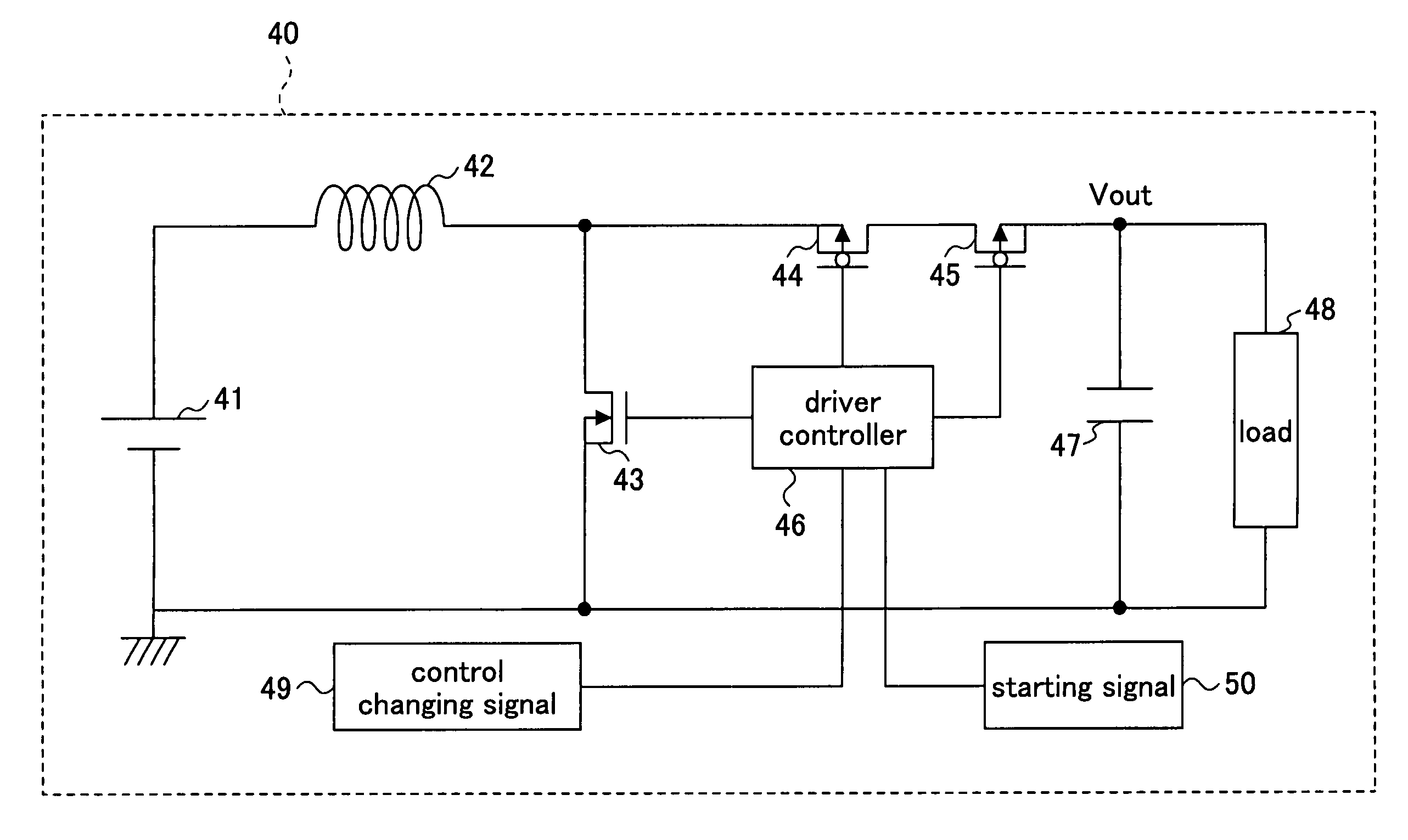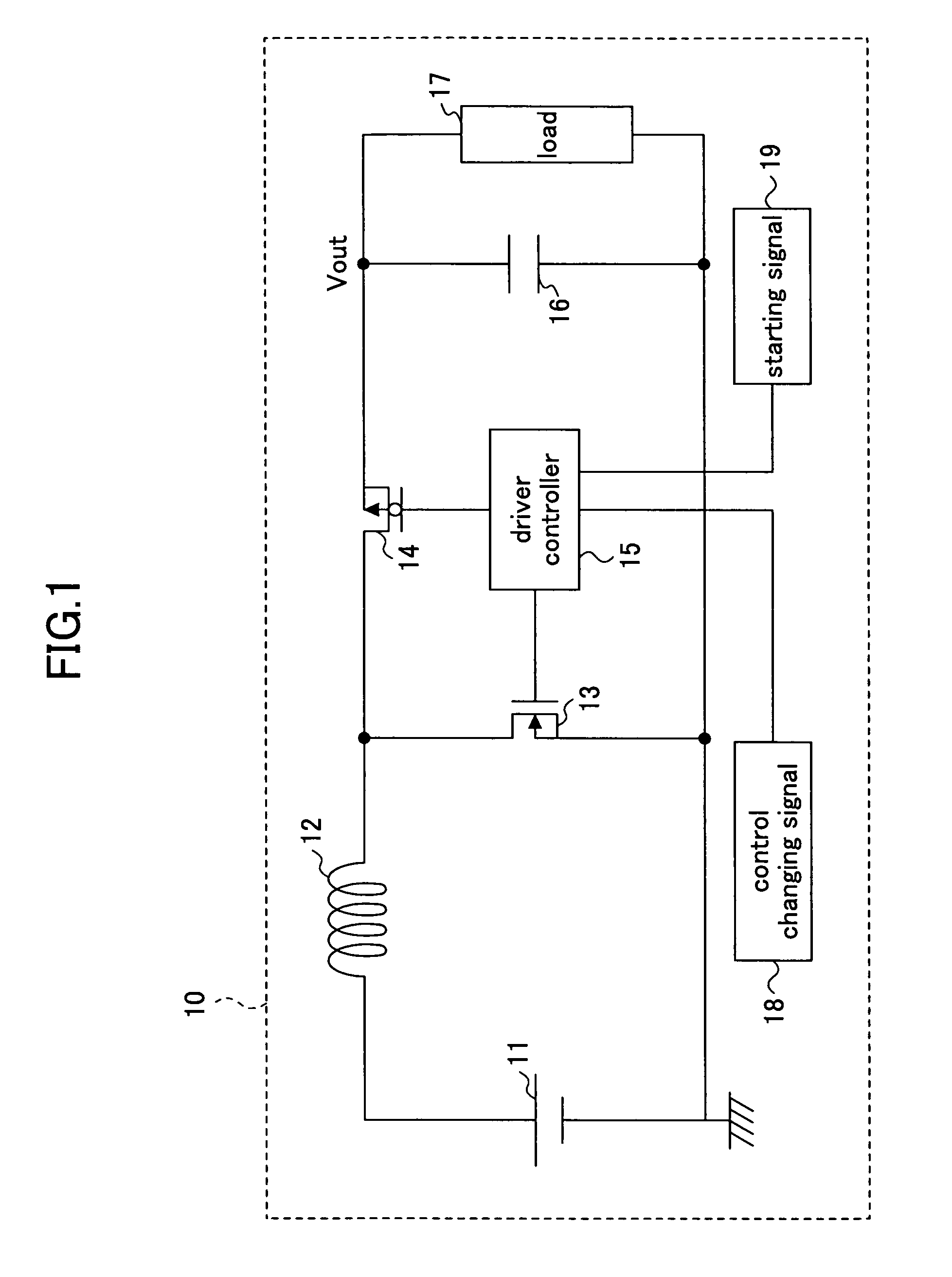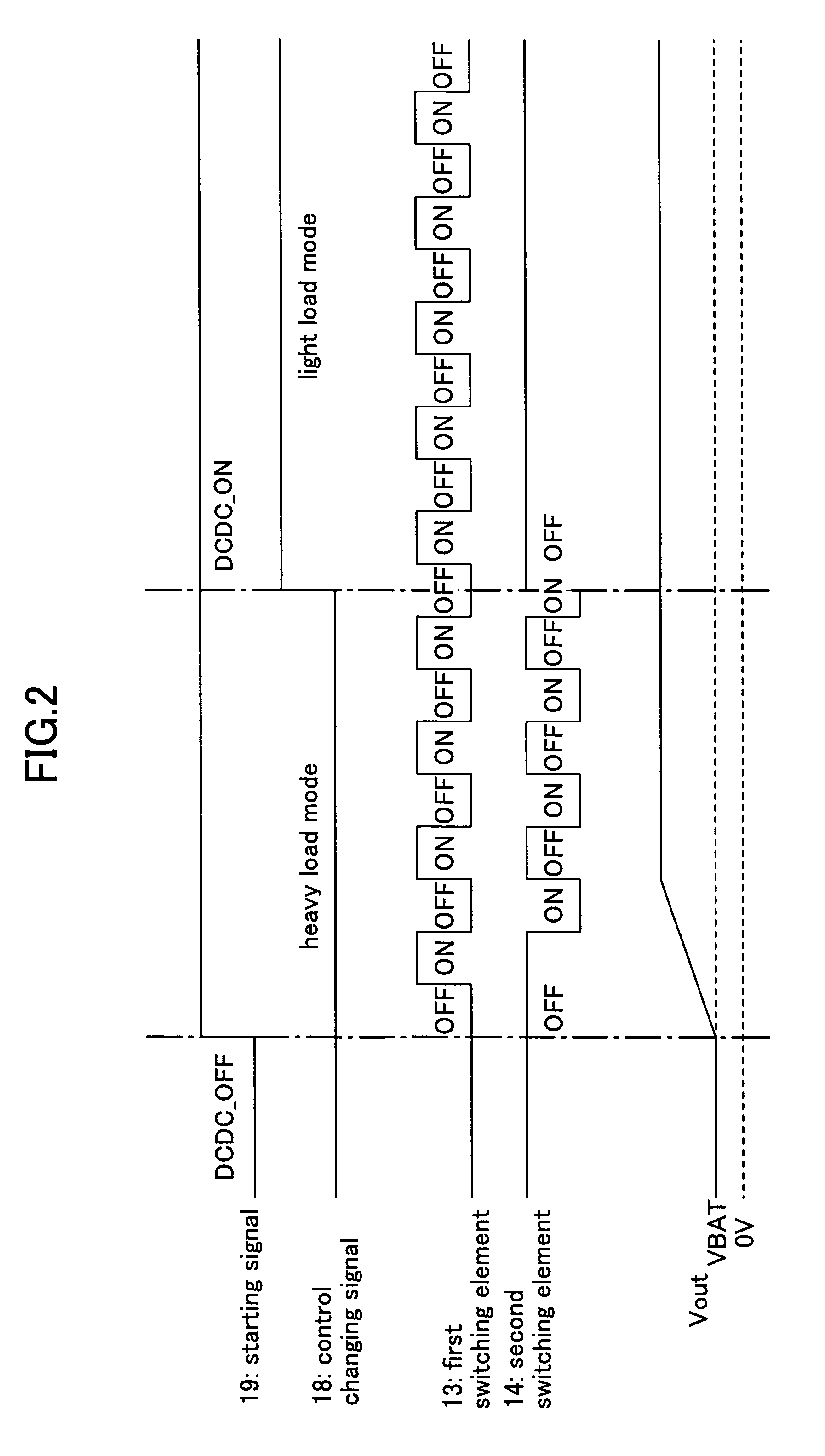Step-up DC-DC converter
a dc-dc converter and step-up technology, applied in the direction of electric variable regulation, process and machine control, instruments, etc., can solve the problems of low overall conversion efficiency, difficult to obtain high efficiency power conversion and non-negligent current consumption for charging and discharging the switching element, so as to prevent a voltage from being output at the output terminal, improve power conversion efficiency, and reduce current consumption under a light load
- Summary
- Abstract
- Description
- Claims
- Application Information
AI Technical Summary
Benefits of technology
Problems solved by technology
Method used
Image
Examples
first embodiment
[0032]FIG. 1 is a circuit diagram illustrating a configuration of a step-up DC-DC converter according to the present invention.
[0033]As shown in FIG. 1, a step-up DC-DC converter 10 of the present embodiment includes an input power source 11, an inductor 12, a first switching element 13 formed of an NMOS transistor, a second switching element 14 formed of a PMOS transistor, a driver controller 15, an output smoothing capacitor 16, and a load 17.
[0034]In the step-up DC-DC converter 10, a positive polarity terminal of the input power source 11 is connected to an end of the inductor 12 in series, and a negative polarity terminal of the input power source 11 is connected to ground. The other end of the inductor 12 is connected to both the first switching element 13 and the second switching element 14. The first switching element 13 is connected to a negative polarity terminal of the input power source 11. The second switching element 14 is connected to the output smoothing capacitor 16 ...
second embodiment
[0045]the present invention is described below.
[0046]FIG. 3 is a circuit diagram illustrating a configuration of a step-up DC-DC converter according to a second embodiment of the present invention.
[0047]As shown in FIG. 3, a step-up DC-DC converter 40 of the present embodiment includes an input power source 41, an inductor 42, and a first switching element 43 formed of an NMOS transistor, two second switching elements 44, 45 connected in series and each formed of a PMOS transistor, a driver controller 46, an output smoothing capacitor 47, and a load 48.
[0048]In the step-up DC-DC converter 40 of the present embodiment, a positive polarity terminal of the input power source 41 is connected to an end of the inductor 42 in series, and a negative polarity terminal of the input power source 41 is connected to ground. The other end of the inductor 42 is connected to the first switching element 43 and the second switching elements 44, 45. The first switching element 43 is connected to a neg...
PUM
 Login to View More
Login to View More Abstract
Description
Claims
Application Information
 Login to View More
Login to View More - R&D
- Intellectual Property
- Life Sciences
- Materials
- Tech Scout
- Unparalleled Data Quality
- Higher Quality Content
- 60% Fewer Hallucinations
Browse by: Latest US Patents, China's latest patents, Technical Efficacy Thesaurus, Application Domain, Technology Topic, Popular Technical Reports.
© 2025 PatSnap. All rights reserved.Legal|Privacy policy|Modern Slavery Act Transparency Statement|Sitemap|About US| Contact US: help@patsnap.com



